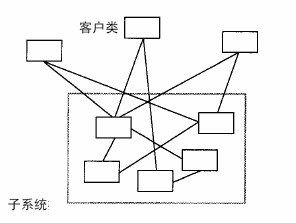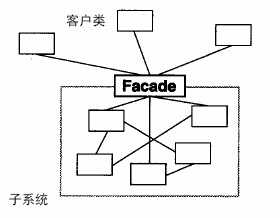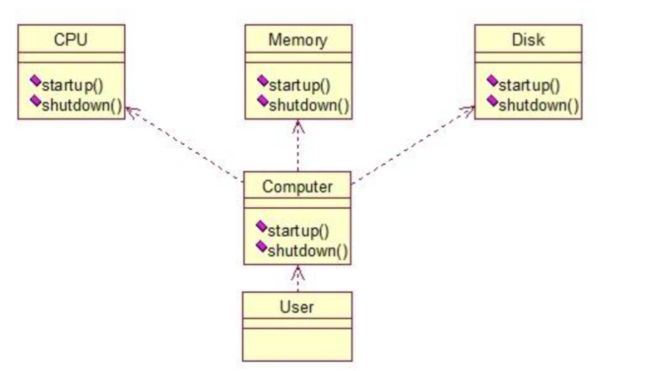- Go 语言单例模式全解析:从青铜到王者段位的实现方案
后端
什么是单例模式?单例模式(SingletonPattern)是一种创建型设计模式,它确保一个类(或结构体,在Go语言中)只有一个实例,并提供一个全局访问点来访问这个实例。这个模式在需要协调系统中动作的场景下非常有用,例如日志记录、配置管理或数据库连接池。为什么在Go中需要单例模式?Go语言以其简洁和高效的并发能力而闻名,支持goroutine和通道(channel)来实现并发编程。在并发环境中,确
- next-hexagonal-starter:前端六边形架构的简约实践
翟珊兰
next-hexagonal-starter:前端六边形架构的简约实践next-hexagonal-starter项目地址:https://gitcode.com/gh_mirrors/ne/next-hexagonal-starter项目介绍在软件开发中,六边形架构(HexagonalArchitecture)是一种设计模式,它通过将应用程序的业务逻辑与外部关注点(如UI、数据库、框架等)解耦,
- 设计模式之建造者模式
缘来是庄
设计模式建造者模式java
目录定义结构适用场景使用示例定义建造者模式是一种创建型设计模式,其核心思想是将复杂对象的构建过程与其表示分离,使相同构建逻辑能生成不同结构的对象。该模式通过分步骤构建复杂对象,允许用户只指定对象类型和内容而无需了解内部构建细节。结构适用场景1)对象具有复杂内部结构或需要多个配置参数时;2)需要将对象的创建与使用分离;3)相同构建过程需产生不同表现形式;4)避免使用过长的构造器参数列表;5)构建步骤
- Java设计模式之抽象工厂模式(Abstract Factory)笔记
ikwil
设计模式专栏java设计模式抽象工厂模式
目录什么叫做抽象工厂模式抽象工厂模式作用抽象工厂模式特征对比抽象工厂和工厂方法抽象工厂模应用场景抽象工厂模式的实现定义抽象工厂接口实现具体产品类定义抽象工厂接口实现具体工厂类进行测试总结参考文献什么叫做抽象工厂模式抽象工厂模式(AbstractFactoryPattern)是一种创建型设计模式,用于提供一个接口,使得客户端能够创建一系列相关或依赖的对象,而无需指定它们的具体类。这个模式有助于确保一
- 设计模式之迭代器模式
尤物程序猿
设计模式迭代器模式
迭代器模式是一种行为设计模式,它提供了一种顺序访问聚合对象中的元素的方法,而不需要暴露该对象的底层表示。迭代器模式将遍历元素的责任交给迭代器对象,而不是聚合对象本身,从而使得聚合对象的接口更加简洁,同时也支持多种遍历方式。迭代器模式的结构迭代器模式主要包含以下几个角色:Iterator(迭代器接口):定义访问和遍历元素的接口。ConcreteIterator(具体迭代器):实现迭代器接口,负责管理
- 设计模式(五)
醇醛酸醚酮酯
设计模式设计模式
状态模式(StatePattern)详解一、核心概念状态模式允许对象在其内部状态改变时改变其行为,使得对象看起来如同修改了其类。该模式将状态相关的行为封装在独立的状态类中,并通过统一接口进行切换。通过切换状态来实现切换行为。当一个对象的行为取决于它的状态,并且它必须在运行时刻根据状态改变它的行为时,就可以考虑使用状态模式了核心组件:上下文(Context):持有当前状态的引用,并将状态相关行为委托
- 设计模式 (四)
抽象工厂模式(AbstractFactoryPattern)详解一、核心概念抽象工厂模式是一种创建型设计模式,其核心思想是提供一个创建一系列相关或相互依赖对象的接口,而无需指定它们具体的类。它允许客户端通过抽象接口创建一组产品,而不必关心具体实现类。二、核心角色抽象工厂(AbstractFactory):定义创建一组产品的抽象方法(如createProductA()、createProductB(
- 设计模式(策略,工厂,单例,享元,门面)+模板方法
sakoba
设计模式数据库java
文章目录前提策略模式思想实现如何拓展模板方法存在的问题思想实现如何拓展工厂模式实现问题及解决(解耦)配置文件方式使用注解单例模式实现方式1,懒汉式(线程不安全)2,懒汉式(线程安全)3,饿汉式4,双重校验锁机制(面)5,静态内部类6,枚举体现享元模式门面模式前提假设做一个需求,从文件中拿到数据并存在数据库中,文档有多种不同的类型,比如json,excel,csv等等。在做这个去求得在过程中,如何让
- RabbitMQ学习笔记:rabbitmq-server -detached Warning: PID file not written; -detached was passed
码炫课堂-码哥
rabbitmq专题rabbitmq
作者简介:大家好,我是smart哥,前中兴通讯、美团架构师,现某互联网公司CTO联系qq:184480602,加我进群,大家一起学习,一起进步,一起对抗互联网寒冬学习必须往深处挖,挖的越深,基础越扎实!阶段1、深入多线程阶段2、深入多线程设计模式阶段3、深入juc源码解析阶段4、深入jdk其余源码解析
- 互联网大厂Java面试实战:严肃面试官与搞笑谢飞机的三轮提问
Fu Dun Yao
Java场景面试宝典Java面试JUCJVM多线程线程池HashMap
互联网大厂Java面试实战:严肃面试官与搞笑谢飞机的三轮提问本文通过一个面试故事,展示了互联网大厂Java求职者与严肃面试官的对话。面试官就Java核心技术、JUC、JVM、多线程、线程池、HashMap、ArrayList、Spring及相关框架、分布式技术、消息队列、中间件、数据库、Linux、Docker、设计模式及DDD等多个技术点,分三轮提问。求职者谢飞机偶尔能准确回答简单问题获得认可,
- 简单工厂模式,工厂模式和注册工厂模式
简单工厂模式(SimpleFactoryPattern)定义:又称静态工厂模式,通过一个工厂类根据传入的参数,返回对应类的实例。它并非GOF标准设计模式,而是一种编程习惯。核心角色:工厂类:包含静态方法,根据参数创建产品实例。抽象产品:定义产品公共接口。具体产品:实现产品接口的具体类。简单工厂模式(SimpleFactoryPattern)属于创建型设计模式,它通过一个工厂类决定创建哪一种产品类的
- 设计模式(二)
醇醛酸醚酮酯
设计模式设计模式
迪米特法则(最少知识原则):定义、核心思想与实践解析一、迪米特法则(LoD)的核心定义迪米特法则(LawofDemeter,LoD),又称“最少知识原则(LeastKnowledgePrinciple)”,是面向对象设计的经典指导原则之一。其核心思想是:一个对象应当尽可能少地与其他对象发生相互作用,只与“直接的朋友”通信,避免与“陌生人”产生直接交互。二、关键概念:“直接的朋友”与“陌生人”直接的
- C++ 多态与虚函数
可乐船长2020
C/C++基础多态c++
这一篇介绍一下C++面向对象三大特征之一的多态(之前面试某大厂的实习生被问到多态,后来又了解到一些设计模式,才体会到多态的强大,在这里把对多态的一点点浅显认识总结一下)如有侵权,请联系删除,如有错误,欢迎大家指正,谢谢多态父类的一个指针,可以有多种执行状态(父类的指针调用子类的函数),即多态多态实际上只是一种思想,而虚函数是实现这个思想的语法基础虚函数虚表若对象有虚函数,对象空间最开始4Byte(
- django+drf 前后端分离总结(1)
a35155
pythondjangopython后端
django常见问题django设计模式django的内置组件认证组件auth模块models用户模型主要有下面几个字段:username、password、email、first_name、last_name一般我们继承AbstractUser去扩展#注意要在setting设置这个、重载系统的用户,让UserProfile生效AUTH_USER_MODEL='users.UserProfile'
- 23种设计模式——单例模式:独一无二的王者设计模式
山海上的风
设计模式单例模式java
单例模式:独一无二的王者设计模式“在我的代码王国里,只能有一个国王!”——单例模式宣言单例模式是什么?想象一下:太阳系只能有一个太阳☀️一个国家只能有一个国王一台电脑只能有一个任务管理器这就是单例模式!它确保一个类只有一个实例,并提供全局访问点。就像你永远不需要第二个任务管理器一样!它是一种创建型的模式!为什么要用单例模式?场景没有单例使用单例数据库连接每次操作都新建连接,资源爆炸!全局共享一个连
- 设计模式系列之——代理模式
HoryC
设计模式java设计模式
代理模式指,通过代理的方式,为对象提供一种访问并控制该对象行为的方法。在客户端不适合或者不能够直接引用一个对象时,可以通过该对象的代理对象来实现对该对象的访问。可以将代理对象理解为客户端和目标对象之间的中介者。比如我们在买房时,通常会有这么几个过程:找房->看房->网签->交易完成,当然真正的过程比这要复杂得多,所以通常会找房产经纪人(中介),这个房产经纪人就是代理,这样我们不需要自己去找房子以及
- 设计模式(十三)—— 代理模式(定义、案例分析、特点、缺点)
一孔之见️
设计模式
文章目录前言正文一、定义二、情景假设三、情景分析四、模式结构及分析(一)两种代理模式(二)两种组合模式的总结(三)模式分析(1)模式特点(2)模式缺点五、使用情景总结前言文章内容主要参考了刘伟主编的《设计模式(第2版)》,同时也结合了自己的一些思考和理解,希望能帮到大家。本篇讲解代理模式,代理模式是非常重要而且也是我们经常能见到的设计模式,比如Spring里面的AOP就是利用了动态代理模式。最重要
- 设计模式——Mediator(中介者)模式
LamaxiyaFc
设计模式java后端设计模式中介者模式
目录前言1定义2适用性3结构3.1结构图3.2参与者4应用举例——以房产中介为例4.1Mediator——HouseMediator4.2具体Mediator——BeijingHouseMediato4.3Colleague4.4具体Colleague——ConcreteColleagueOne、ConcreteColleagueTwo5总结参考文献前言将一个系统分割为多个对象可以增强复用性,但是
- 设计模式——代理模式(Proxy Pattern)
Lucifer Zhao
设计模式代理模式
定义:代理模式是指为其他对象提供一个代理,控制对这个对象的访问,保护目标对象,增强对象功能。代理对象在目标对象和客户端之间起中介作用。属于结构型设计模式。生活中的代理模式:房产中介、快递小哥、黄牛党。适应场景:当需要保护目标对象,增强目标对象功能时需要用到代理模式。代理模式的优点:代理模式能将代理对象与真实被调用目标对象分离一定程度上降低了系统的耦合程度,易于扩展代理可以起到保护目标对象,增强目标
- 设计模式(17)——中介者模式
迷惘小书童
设计模式中介者模式设计模式
中介者模式(MediatorPattern)是用来降低多个对象和类之间的通信复杂性。这种模式提供了一个中介类,该类通常处理不同类之间的通信,并支持松耦合,使代码易于维护。中介者模式属于行为型模式。前段时间要租房子,不可避免的要跟中介打交道,不用中介的话,就要直接找一房东,首先不好找房东,一个房东就一个房子,这个不满意就要找下一个房东,麻烦,而且房东找的也不容易,不如全部委托给房产中介,付点中介费省
- DAO模式
红中马喽
java数据库开发语言笔记学习后端设计模式
前言DAO(DataAccessObject)模式是一种常用的设计模式,主要用于将数据访问逻辑与业务逻辑分离。它提供了一种抽象层,使得应用程序可以与不同的数据源(如数据库、文件系统等)进行交互,而无需了解底层数据存储的细节。DAO模式的核心思想是将数据访问操作封装在独立的类中,从而提高代码的可维护性、可扩展性和可重用性。如何使用DAO模式1.首先导入这个包(有需要的可以私聊我)然后添加配置文件,为
- 微服务架构设计模式资源下载介绍:掌握微服务设计精髓,助力架构升级
微服务架构设计模式资源下载介绍:掌握微服务设计精髓,助力架构升级【下载地址】微服务架构设计模式资源下载介绍探索微服务架构的奥秘,掌握设计模式的精髓。本仓库提供了一本权威的英文书籍《MicroservicePatterns:WithexamplesinJava》的PDF资源,由克里斯-理查森精心撰写。书中不仅涵盖了微服务的基本概念,还深入探讨了服务拆分、服务发现、负载均衡等关键主题,辅以丰富的实例和
- 【C++】命令模式
目录一、模式核心概念与结构二、C++实现示例:遥控器与家电控制三、命令模式的关键特性四、应用场景五、命令模式与其他设计模式的关系六、C++标准库中的命令模式应用七、优缺点分析八、实战案例:数据库事务命令九、实现注意事项如果这篇文章对你有所帮助,渴望获得你的一个点赞!命令模式(CommandPattern)是一种【行为型】设计模式,它将请求封装为对象,从而使你可以用不同的请求对客户端进行参数化,对请
- 单例设计模式详解
Code溪
Java设计模式
单例模式:懒汉式vs饿汉式单例模式是Java中最常用的设计模式之一,确保一个类只有一个实例,并提供全局访问点。其中懒汉式和饿汉式是两种最基础的实现方式,各有特点和适用场景。一、饿汉式(EagerInitialization)1.核心特点立即加载:在类加载时就创建实例线程安全:由JVM类加载机制保证线程安全资源利用率:可能造成资源浪费(如果实例未被使用)2.标准实现publicclassEagerS
- 【设计模式】单例模式之双检锁(Double-Checked Locking)
浩瀚之水_csdn
#软件模式设计模式单例模式
双检锁(Double-CheckedLocking)是一种在多线程环境下高效实现单例模式的技术,它结合了延迟初始化和线程安全的优点,避免了不必要的同步开销。核心思想双检锁的核心思想是:第一重检查(无锁):快速检查实例是否已创建加锁保护:确保只有一个线程进入创建流程第二重检查(有锁):再次检查实例是否已创建创建实例:如果仍未创建,则创建实例经典实现(C++11之前)#includeclassSing
- 策略模式与工厂模式的黄金组合:从设计到实战
策略模式和工厂模式是软件开发中最常用的两种设计模式,当它们结合使用时,能产生1+1>2的效果。本文将通过实际案例,阐述这两种模式的协同应用,让代码架构更优雅、可维护性更强。一、为什么需要组合使用?单独使用的痛点策略模式:客户端需要知道所有策略类,并手动创建策略实例工厂模式:单独使用时主要解决对象创建问题,不涉及算法切换组合后的优势彻底解耦:客户端无需知道策略类的存在和创建方式一键切换:通过工厂统一
- [Go] Option选项设计模式 — — 编程方式基础入门
NPE~
go教程golang设计模式开发语言Option编程规范
[Go]Option选项设计模式——编程方式基础入门全部代码地址,欢迎⭐️Github:https://github.com/ziyifast/ziyifast-code_instruction/tree/main/go-demo/go-option1介绍在Go开发中,我们经常遇到需要处理多参数配置的场景。传统方法存在诸多痛点,例如:问题一:参数过多且顺序敏感,导致我们调用时难以阅读,不知道每个参
- 三维扫描逆向建模-三维扫描仪助力汽车内饰改装设计
中科米堆
汽车人工智能自动化
汽车消费市场日益细分化,个性化定制需求正深刻影响着汽车后市场服务模式。作为连接设计创意与工程实现的桥梁,三维扫描逆向建模技术以数字化手段重塑了汽车内饰改装的设计流程,为座椅、仪表盘、门板等部件的定制化改造提供了全新解决方案。汽车内饰改装涉及复杂的三维曲面重构与空间适配问题。传统设计模式依赖手工测量与经验估算,设计师需通过卡尺、卷尺等工具获取原车部件尺寸,再基于二维图纸进行三维建模。这种作业方式在面
- 【C++】外观模式
OpenC++
设计模式c++外观模式设计模式
目录一、模式核心概念与结构二、C++实现示例:计算机启动流程三、外观模式的应用场景四、外观模式与其他设计模式的关系五、C++标准库中的外观模式应用六、优缺点分析七、实战案例:数据库操作外观八、实现注意事项如果这篇文章对你有所帮助,渴望获得你的一个点赞!外观模式(FacadePattern)是一种【结构型】设计模式,它为复杂的子系统提供一个统一的接口,使客户端只需通过这个简单的接口就能访问子系统,而
- C#中的设计模式:构建更加优雅的代码
Envyᥫᩣᩚ
c#开发语言
C#在面向对象编程(OOP)方面的强大支持,我们可以探讨“C#中的设计模式”。这不仅有助于理解如何更好地组织代码,还能提高代码的可维护性和可扩展性。引言设计模式是软件工程中经过实践验证的解决方案模板,它们提供了一种标准化的方法来解决常见的开发问题。对于使用C#进行开发的程序员来说,理解和应用这些模式可以帮助创建结构良好、易于维护和扩展的应用程序。本文将介绍几种常用的设计模式,并展示如何用C#实现它
- Linux的Initrd机制
被触发
linux
Linux 的 initrd 技术是一个非常普遍使用的机制,linux2.6 内核的 initrd 的文件格式由原来的文件系统镜像文件转变成了 cpio 格式,变化不仅反映在文件格式上, linux 内核对这两种格式的 initrd 的处理有着截然的不同。本文首先介绍了什么是 initrd 技术,然后分别介绍了 Linux2.4 内核和 2.6 内核的 initrd 的处理流程。最后通过对 Lin
- maven本地仓库路径修改
bitcarter
maven
默认maven本地仓库路径:C:\Users\Administrator\.m2
修改maven本地仓库路径方法:
1.打开E:\maven\apache-maven-2.2.1\conf\settings.xml
2.找到
- XSD和XML中的命名空间
darrenzhu
xmlxsdschemanamespace命名空间
http://www.360doc.com/content/12/0418/10/9437165_204585479.shtml
http://blog.csdn.net/wanghuan203/article/details/9203621
http://blog.csdn.net/wanghuan203/article/details/9204337
http://www.cn
- Java 求素数运算
周凡杨
java算法素数
网络上对求素数之解数不胜数,我在此总结归纳一下,同时对一些编码,加以改进,效率有成倍热提高。
第一种:
原理: 6N(+-)1法 任何一个自然数,总可以表示成为如下的形式之一: 6N,6N+1,6N+2,6N+3,6N+4,6N+5 (N=0,1,2,…)
- java 单例模式
g21121
java
想必单例模式大家都不会陌生,有如下两种方式来实现单例模式:
class Singleton {
private static Singleton instance=new Singleton();
private Singleton(){}
static Singleton getInstance() {
return instance;
}
- Linux下Mysql源码安装
510888780
mysql
1.假设已经有mysql-5.6.23-linux-glibc2.5-x86_64.tar.gz
(1)创建mysql的安装目录及数据库存放目录
解压缩下载的源码包,目录结构,特殊指定的目录除外:
- 32位和64位操作系统
墙头上一根草
32位和64位操作系统
32位和64位操作系统是指:CPU一次处理数据的能力是32位还是64位。现在市场上的CPU一般都是64位的,但是这些CPU并不是真正意义上的64 位CPU,里面依然保留了大部分32位的技术,只是进行了部分64位的改进。32位和64位的区别还涉及了内存的寻址方面,32位系统的最大寻址空间是2 的32次方= 4294967296(bit)= 4(GB)左右,而64位系统的最大寻址空间的寻址空间则达到了
- 我的spring学习笔记10-轻量级_Spring框架
aijuans
Spring 3
一、问题提问:
→ 请简单介绍一下什么是轻量级?
轻量级(Leightweight)是相对于一些重量级的容器来说的,比如Spring的核心是一个轻量级的容器,Spring的核心包在文件容量上只有不到1M大小,使用Spring核心包所需要的资源也是很少的,您甚至可以在小型设备中使用Spring。
- mongodb 环境搭建及简单CURD
antlove
WebInstallcurdNoSQLmongo
一 搭建mongodb环境
1. 在mongo官网下载mongodb
2. 在本地创建目录 "D:\Program Files\mongodb-win32-i386-2.6.4\data\db"
3. 运行mongodb服务 [mongod.exe --dbpath "D:\Program Files\mongodb-win32-i386-2.6.4\data\
- 数据字典和动态视图
百合不是茶
oracle数据字典动态视图系统和对象权限
数据字典(data dictionary)是 Oracle 数据库的一个重要组成部分,这是一组用于记录数据库信息的只读(read-only)表。随着数据库的启动而启动,数据库关闭时数据字典也关闭 数据字典中包含
数据库中所有方案对象(schema object)的定义(包括表,视图,索引,簇,同义词,序列,过程,函数,包,触发器等等)
数据库为一
- 多线程编程一般规则
bijian1013
javathread多线程java多线程
如果两个工两个以上的线程都修改一个对象,那么把执行修改的方法定义为被同步的,如果对象更新影响到只读方法,那么只读方法也要定义成同步的。
不要滥用同步。如果在一个对象内的不同的方法访问的不是同一个数据,就不要将方法设置为synchronized的。
- 将文件或目录拷贝到另一个Linux系统的命令scp
bijian1013
linuxunixscp
一.功能说明 scp就是security copy,用于将文件或者目录从一个Linux系统拷贝到另一个Linux系统下。scp传输数据用的是SSH协议,保证了数据传输的安全,其格式如下: scp 远程用户名@IP地址:文件的绝对路径
- 【持久化框架MyBatis3五】MyBatis3一对多关联查询
bit1129
Mybatis3
以教员和课程为例介绍一对多关联关系,在这里认为一个教员可以叫多门课程,而一门课程只有1个教员教,这种关系在实际中不太常见,通过教员和课程是多对多的关系。
示例数据:
地址表:
CREATE TABLE ADDRESSES
(
ADDR_ID INT(11) NOT NULL AUTO_INCREMENT,
STREET VAR
- cookie状态判断引发的查找问题
bitcarter
formcgi
先说一下我们的业务背景:
1.前台将图片和文本通过form表单提交到后台,图片我们都做了base64的编码,并且前台图片进行了压缩
2.form中action是一个cgi服务
3.后台cgi服务同时供PC,H5,APP
4.后台cgi中调用公共的cookie状态判断方法(公共的,大家都用,几年了没有问题)
问题:(折腾两天。。。。)
1.PC端cgi服务正常调用,cookie判断没
- 通过Nginx,Tomcat访问日志(access log)记录请求耗时
ronin47
一、Nginx通过$upstream_response_time $request_time统计请求和后台服务响应时间
nginx.conf使用配置方式:
log_format main '$remote_addr - $remote_user [$time_local] "$request" ''$status $body_bytes_sent "$http_r
- java-67- n个骰子的点数。 把n个骰子扔在地上,所有骰子朝上一面的点数之和为S。输入n,打印出S的所有可能的值出现的概率。
bylijinnan
java
public class ProbabilityOfDice {
/**
* Q67 n个骰子的点数
* 把n个骰子扔在地上,所有骰子朝上一面的点数之和为S。输入n,打印出S的所有可能的值出现的概率。
* 在以下求解过程中,我们把骰子看作是有序的。
* 例如当n=2时,我们认为(1,2)和(2,1)是两种不同的情况
*/
private stati
- 看别人的博客,觉得心情很好
Cb123456
博客心情
以为写博客,就是总结,就和日记一样吧,同时也在督促自己。今天看了好长时间博客:
职业规划:
http://www.iteye.com/blogs/subjects/zhiyeguihua
android学习:
1.http://byandby.i
- [JWFD开源工作流]尝试用原生代码引擎实现循环反馈拓扑分析
comsci
工作流
我们已经不满足于仅仅跳跃一次,通过对引擎的升级,今天我测试了一下循环反馈模式,大概跑了200圈,引擎报一个溢出错误
在一个流程图的结束节点中嵌入一段方程,每次引擎运行到这个节点的时候,通过实时编译器GM模块,计算这个方程,计算结果与预设值进行比较,符合条件则跳跃到开始节点,继续新一轮拓扑分析,直到遇到
- JS常用的事件及方法
cwqcwqmax9
js
事件 描述
onactivate 当对象设置为活动元素时触发。
onafterupdate 当成功更新数据源对象中的关联对象后在数据绑定对象上触发。
onbeforeactivate 对象要被设置为当前元素前立即触发。
onbeforecut 当选中区从文档中删除之前在源对象触发。
onbeforedeactivate 在 activeElement 从当前对象变为父文档其它对象之前立即
- 正则表达式验证日期格式
dashuaifu
正则表达式IT其它java其它
正则表达式验证日期格式
function isDate(d){
var v = d.match(/^(\d{4})-(\d{1,2})-(\d{1,2})$/i);
if(!v) {
this.focus();
return false;
}
}
<input value="2000-8-8" onblu
- Yii CModel.rules() 方法 、validate预定义完整列表、以及说说验证
dcj3sjt126com
yii
public array rules () {return} array 要调用 validate() 时应用的有效性规则。 返回属性的有效性规则。声明验证规则,应重写此方法。 每个规则是数组具有以下结构:array('attribute list', 'validator name', 'on'=>'scenario name', ...validation
- UITextAttributeTextColor = deprecated in iOS 7.0
dcj3sjt126com
ios
In this lesson we used the key "UITextAttributeTextColor" to change the color of the UINavigationBar appearance to white. This prompts a warning "first deprecated in iOS 7.0."
Ins
- 判断一个数是质数的几种方法
EmmaZhao
Mathpython
质数也叫素数,是只能被1和它本身整除的正整数,最小的质数是2,目前发现的最大的质数是p=2^57885161-1【注1】。
判断一个数是质数的最简单的方法如下:
def isPrime1(n):
for i in range(2, n):
if n % i == 0:
return False
return True
但是在上面的方法中有一些冗余的计算,所以
- SpringSecurity工作原理小解读
坏我一锅粥
SpringSecurity
SecurityContextPersistenceFilter
ConcurrentSessionFilter
WebAsyncManagerIntegrationFilter
HeaderWriterFilter
CsrfFilter
LogoutFilter
Use
- JS实现自适应宽度的Tag切换
ini
JavaScripthtmlWebcsshtml5
效果体验:http://hovertree.com/texiao/js/3.htm
该效果使用纯JavaScript代码,实现TAB页切换效果,TAB标签根据内容自适应宽度,点击TAB标签切换内容页。
HTML文件代码:
<!DOCTYPE html>
<html xmlns="http://www.w3.org/1999/xhtml"
- Hbase Rest API : 数据查询
kane_xie
RESThbase
hbase(hadoop)是用java编写的,有些语言(例如python)能够对它提供良好的支持,但也有很多语言使用起来并不是那么方便,比如c#只能通过thrift访问。Rest就能很好的解决这个问题。Hbase的org.apache.hadoop.hbase.rest包提供了rest接口,它内嵌了jetty作为servlet容器。
启动命令:./bin/hbase rest s
- JQuery实现鼠标拖动元素移动位置(源码+注释)
明子健
jqueryjs源码拖动鼠标
欢迎讨论指正!
print.html代码:
<!DOCTYPE html>
<html>
<head>
<meta http-equiv=Content-Type content="text/html;charset=utf-8">
<title>发票打印</title>
&l
- Postgresql 连表更新字段语法 update
qifeifei
PostgreSQL
下面这段sql本来目的是想更新条件下的数据,可是这段sql却更新了整个表的数据。sql如下:
UPDATE tops_visa.visa_order
SET op_audit_abort_pass_date = now()
FROM
tops_visa.visa_order as t1
INNER JOIN tops_visa.visa_visitor as t2
ON t1.
- 将redis,memcache结合使用的方案?
tcrct
rediscache
公司架构上使用了阿里云的服务,由于阿里的kvstore收费相当高,打算自建,自建后就需要自己维护,所以就有了一个想法,针对kvstore(redis)及ocs(memcache)的特点,想自己开发一个cache层,将需要用到list,set,map等redis方法的继续使用redis来完成,将整条记录放在memcache下,即findbyid,save等时就memcache,其它就对应使用redi
- 开发中遇到的诡异的bug
wudixiaotie
bug
今天我们服务器组遇到个问题:
我们的服务是从Kafka里面取出数据,然后把offset存储到ssdb中,每个topic和partition都对应ssdb中不同的key,服务启动之后,每次kafka数据更新我们这边收到消息,然后存储之后就发现ssdb的值偶尔是-2,这就奇怪了,最开始我们是在代码中打印存储的日志,发现没什么问题,后来去查看ssdb的日志,才发现里面每次set的时候都会对同一个key


